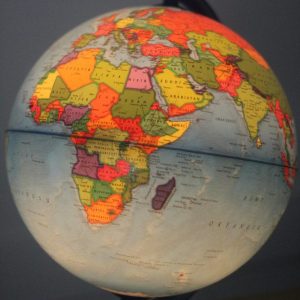In our increasingly data-driven world, coordinate systems serve as the invisible framework that powers everything from smartphone navigation to large-scale infrastructure projects. These mathematical models provide the essential reference points that allow us to precisely locate any position on Earth’s surface a capability that has become fundamental across numerous industries and everyday technologies.
For professionals working with geographic information systems (GIS), surveying, or cartography, a deep understanding of coordinate systems is not just beneficial it’s absolutely necessary. These systems form the backbone of spatial analysis, enabling accurate measurements, proper data alignment, and reliable mapping. Even for outdoor enthusiasts using GPS devices or hiking apps, recognizing how coordinate systems function can mean the difference between confidently reaching a destination and wandering aimlessly through unfamiliar terrain.
Among the many coordinate systems in use today, two stand out as particularly significant: WGS84 (World Geodetic System 1984) and UTM (Universal Transverse Mercator). These systems have become global standards, each serving distinct but equally important purposes in geospatial applications. WGS84 provides the foundation for worldwide GPS navigation and satellite positioning, while UTM offers the precision needed for local mapping and engineering projects. The choice between these systems or understanding how they interact can significantly impact the accuracy and usability of spatial data. Understanding coordinate systems is just one piece. To get the most from your spatial work you’ll need a variety of GIS tools designed to handle everything from data visualization to analysis.
What Are Coordinate Systems?
A coordinate system is a framework used to define positions on Earth’s surface. Since the Earth is a three-dimensional sphere, representing locations accurately requires a standardized method. Coordinate systems provide a way to translate real-world locations into numerical values that can be plotted on maps or used in digital mapping software. There are two main types: geographic coordinate systems (like WGS84) and projected coordinate systems (like UTM).
WGS84: The Global Standard
The World Geodetic System 1984 (WGS84) is the most widely used geographic coordinate system. It serves as the reference framework for GPS navigation and is the default system for most modern mapping applications. WGS84 represents locations using latitude and longitude, which are angular measurements relative to the Earth’s center.
Latitude measures how far north or south a point is from the Equator, ranging from -90° (South Pole) to +90° (North Pole). Longitude measures east or west from the Prime Meridian (0°, passing through Greenwich, England), ranging from -180° to +180°. Because WGS84 is a global system, it works well for worldwide applications like aviation, maritime navigation, and satellite imagery.
However, WGS84 has limitations when it comes to measuring distances or areas. Since it uses degrees as units, converting these into meters or kilometers requires complex calculations, especially over large regions. This is where projected coordinate systems like UTM become useful.
UTM: A Projected System for Local Accuracy
The Universal Transverse Mercator (UTM) system is a projected coordinate system designed to provide more accurate distance and area measurements over smaller regions. Unlike WGS84, which covers the entire globe, UTM divides the Earth into 60 longitudinal zones, each 6 degrees wide. Each zone uses its own flat, two-dimensional grid, minimizing distortion.
UTM coordinates are expressed in meters, making them easier to work with for engineering, surveying, and military applications. Locations are given as eastings (distance east from a central meridian) and northings (distance north from the Equator, or south in the Southern Hemisphere). Because UTM zones are narrow, distortion is kept to a minimum, ensuring high accuracy for local mapping.
One key difference between WGS84 and UTM is that UTM is not a single global system but a collection of zones. If you’re working across multiple UTM zones, you’ll need to convert between them, whereas WGS84 provides a seamless global reference.
When to Use WGS84 vs. UTM
Choosing between WGS84 and UTM depends on your specific needs. If you’re working with global data such as tracking flights, analyzing climate patterns, or using GPS for international travel WGS84 is the best choice. Its latitude and longitude values are universally recognized and integrate seamlessly with most digital mapping tools.
On the other hand, if you need precise measurements for construction, land surveying, or regional mapping, UTM is often the better option. Its metric-based grid simplifies calculations, and its zoned structure ensures minimal distortion. Many topographic maps and local government datasets use UTM for this reason.
Converting Between WGS84 and UTM
Since both systems serve different purposes, converting between them is sometimes necessary. Software like GIS applications (ArcGIS, QGIS) and online tools can transform WGS84 coordinates into UTM and vice versa. The conversion involves mathematical formulas that account for the Earth’s curvature and the specific UTM zone’s projection parameters.
Conclusion
Both WGS84 and UTM play crucial roles in modern geospatial applications. WGS84 provides a universal framework for global positioning, while UTM offers high precision for local projects. Understanding these coordinate systems allows professionals and enthusiasts alike to work with maps and spatial data more effectively. Whether you’re navigating with a handheld GPS or analyzing geographic datasets, knowing which system to use and when can make all the difference in accuracy and efficiency.
Read more about Coordinate systems from Esri or from Physics LibreTexts and gain more insights. Checkout previous blog posts from GeoInfoSpot.



